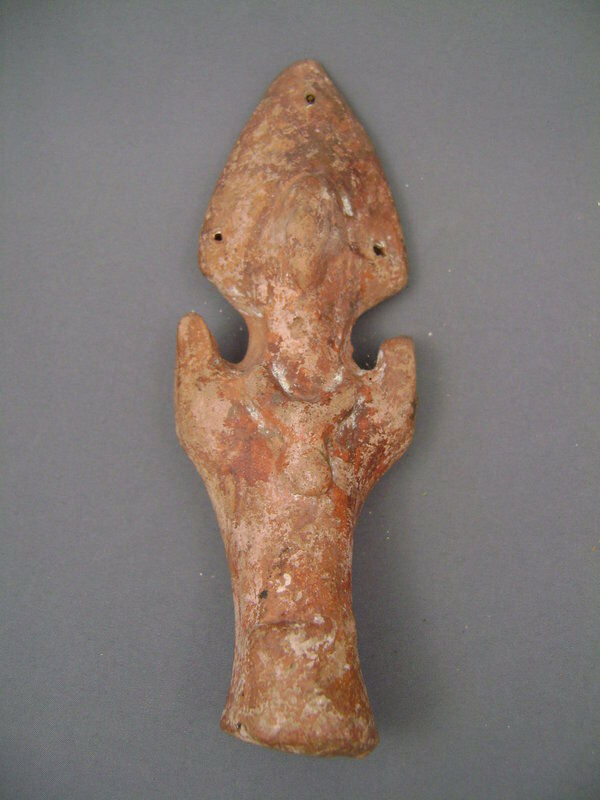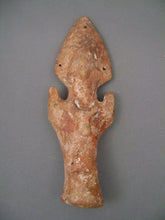Ancient Coptic Woman Terracotta Ex Gustave Jéquier (1868-1946)
Regular price
$495.00
Sale
Nice terracotta figure of a stylized women that is of Coptic origin. As with most Coptic are we find influence from many cultures. This artifact measures 5.95 inches is well preserved with reddish wash.
Originally the term "Copt" referred to the native people who lived in Egypt (opposed to the Arabs or Greeks) who invaded Egypt. The term later became a religious one referring to Christian Egyptians. The Coptic period therefore starts at the 1st millennium of the Christian era, when Christianity thrived in Egypt. Coptic artist draws inspiration and influence from ancient Egypt, classic Greece, Rome and Near Eastern art. Although Coptic art is in general associated with Christianity, many of its motifs are clearly non-Christian in form as with this example. The style of Coptic art evolved from the late antique art of Egypt, retaining Greek and Roman influences. The stylistic nature of Coptic art moved away from the "natural" style we see in Greek and Roman art of the human form. Outlines and detail are very simplified and this terracotta women is an excellent example of this style. Some of the archaeological sites are El-Bagawat, Oxyrhynchus, Sakkara, Bawit, and Antinoë.
Provenance: Collected by Gustave Jéquier (1868-1946)
Ex. Billy Jamieson Collection, 2009 (1954-2011)
Authentication: Gayle Gibson, Royal Ontario Museum Toronto
Galleria Delvecchio .… “is pleased to present a collection of Egyptian antiquities assembled by the celebrated Swiss Egyptologist Gustave Jéquier. Jéquier was born in 1868 in Neuchatel. He first studied in Paris under Gaston Maspero (1846-1916) and later went to Berlin before joining the de Morgan expedition to Persia, during which time he contributed to the discovery and decipherment of the code of Hammurabi. Gustave Jéquier was a giant in the field of Egyptology whose contributions are far too numerous to list here. He is best known for his association with the French Institute in Cairo which enabled him to engage in seminal research at the pyramid site of the Old Kingdom. He also completed the work begun at Abydos by his Swiss compatriot, [Henri] Eduard Naville (1844-1926). The two are considered to be Switzerland’s most preeminent Egyptologists. One of Jéquier’s most important discoveries was the 13th Dynasty pyramid of Khendjer. He wrote extensively on his history of Egyptian architecture, and published on philology and religion as well. Gustave Jéquier died in 1946 in the city in which he was born, and most of his collection was acquired by the University of Basel. The works of art presented here were given to a sibling who emigrated to the US in the late 1940’s; the collection later passed to their daughter, Jéquier’s niece.”


